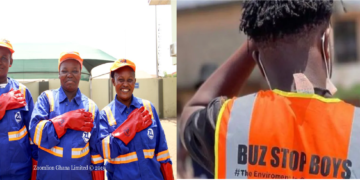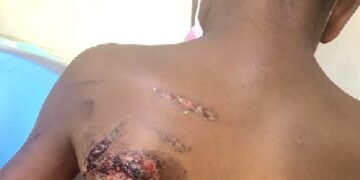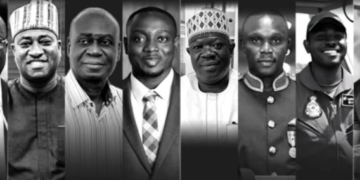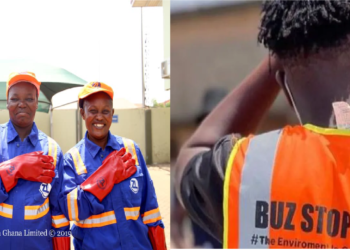Friends told me that having sexual intercourse just once would end my monthly excruciating menstrual pains, said 16- year old Patience Adjei-Anima, of the Techiman Senior High School in the Brong Ahafo Region.
An active member of the Adolescent Reproductive Health Club in her school, Patience has had to endure taunts from peers, including close relations for being too ‘colo’ as she has refused to join the fray of young girls in her community who engage in relationships with the oposite sex as a means to provide some of their needs while in school.
“When I need stuff like toothpaste or food items, some of my school friends refuse to give me any of theirs, and would tell me to get a boyfriend to supply those items, just like them,” Patience added.
But Patience remains undaunted by the jeers of her peers and remains committed to reaping the benefits of belonging to the Adolescent Reproductive Health Club in her school.
Through the club’s activities, she has learnt the importance of delaying sexual relations in order to avoid sexually transmitted infections, unwanted pregnancy and unsafe abortion.
The GHARH project
The Adolescent Reproductive Health Clubs are a key activity of the Ghana Adolescent Reproductive Health Programme (GHARH), a three -year UKAID funded project, being executed in partnership with the Government.
It is part of a broader maternal health programme which is expected to contribute to the reduction of overall maternal mortality in Ghana and increase the uptake of family planning.
Being implemented by the former Futures Group Europe, now Palladium in the Brong Ahafo Region, the project commenced in January 2014 and is scheduled for completion by March 2017.
The Team Leader for the GHARH project, Mr David Logan, says that the overall goal of the project is to strengthen the government’s capacity to manage, implement and expand cost effective adolescent reproductive health programme at the national and regional levels with focus on the Brong Ahafo Region.
According to Mr Logan, the UKAID GHARH project seeks to positively impact on young people’s sexual and reproductive health (SRH) by responding to different determinants at various levels such as individual, interpersonal, organisational, community and structural levels, including focusing attention on both the demand and the supply side aspects of the provision of health services and commodities.
Currently in its second year, the project has successfully disbursed grant to 32 Government of Ghana grantees including the National Population Council, Ghana Health Service, Ghana Education Service, National Youth Authority at the national and in the Brong Ahafo Region, the Regional Coordinating Council and the 27 Municipal and District Assemblies.
Additionally, the project has enrolled five NGOs to support the implementation of GHARH interventions at the community level, working with local leaders and young people themselves to bring about change.
The project is also working with the Regional Health Directorate and the District Health Management Teams to strengthen the provision of counselling and family planning services for young people.
Part of this support includes refurbishment of 54 health facilities in the region to create Adolescent/Youth Friendly Corners, which are dedicated sections of the facilities that caters exclusively to the provision of counselling and other services to young people.
Teenage pregnancy in Brong Ahafo Region
The Brong Ahafo Region is noted for its high teenage pregnancy rates although recent figures released by the Regional Public Health Directorate of the Ghana Health Service (GHS) show a significant drop in teenage pregnancies in the region compared to the national average.
According to the acting Deputy Director of Public Health,Dr Osei Kuffuor Afreh, the region registered a total of 73,490 expectant mothers at its ante-natal facilities, out of which 10,196 were between 15 and 19-years-old, while 280 were between 10 and 14-years-old.
The statistics further indicate that girls aged between 10 and 19 account for 14.25 per cent reported adolescent pregnancies, an improvement over the previous year’s 22 per cent for the region.
Adolescent Reproductive Health Clubs
The Health Clubs, which have been formed both in schools and out of school, are a key component of the GHARH project.
The in-school clubs are led by Ghana Health Service and Ghana Education Service , while the out-of school clubs are managed by National Youth Authority and selected non-governmental organisations.
The in-school clubs carry out two mandatory activities, which are peer education training and a project to promote Adolescent Sexual and Reproductive Health either in the immediate community around the school or within the school.
In addition, they undertake activities to promote healthy behaviour among peers and provide peer education.
The members also go on excursions and take part in debate and quiz competitions among others.
Lydia Njornyaa, 18, also of the Techiman Senior High School talks of the benefits of being a member of the club. “Now I know the consequencies of early motherhood. We also are taught how to deal with menstrual issues and abstain from sex to avoid disease,” she stated..















